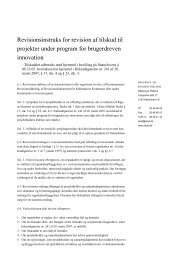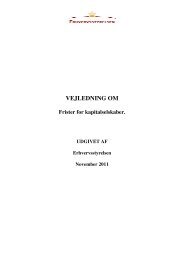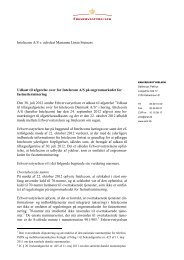Risk-Based Approach â Guidance for Money Service Businesses
Risk-Based Approach â Guidance for Money Service Businesses
Risk-Based Approach â Guidance for Money Service Businesses
You also want an ePaper? Increase the reach of your titles
YUMPU automatically turns print PDFs into web optimized ePapers that Google loves.
<strong>Risk</strong>-<strong>Based</strong> <strong>Approach</strong> – <strong>Guidance</strong> <strong>for</strong> <strong>Money</strong> <strong>Service</strong> <strong>Businesses</strong> - July 2009 Amounts of illicit money generated abroad and laundered domestically.Main channels or instruments used <strong>for</strong> laundering or financing terrorism.Sectors of the legal economy affected.Underground areas in the economy.78. Countries should also consider how an understanding of the risks of money laundering andterrorist financing can be best achieved at the national level. Which body or bodies will be responsible <strong>for</strong>contributing to this assessment? How <strong>for</strong>mal should an assessment be? Should the competent authority'sview be made public? These are all questions <strong>for</strong> the competent authority to consider.79. The desired outcome is that decisions about allocating responsibilities and resources at thenational level are based on a comprehensive and up-to-date understanding of the risks. To achieve thedesired outcome, competent authorities should develop and implement measures to mitigate the identifiedrisks.80. Developing and operating a risk-based approach involves <strong>for</strong>ming judgements. It is importantthat these judgements are well in<strong>for</strong>med. It follows that, to be effective, the risk-based approach should bein<strong>for</strong>mation-based and include intelligence where appropriate. Ef<strong>for</strong>t should be made to ensure that riskassessments are based on fresh and accurate in<strong>for</strong>mation. Countries, in partnership with law en<strong>for</strong>cementbodies, FIUs, and regulators, are well placed to bring their knowledge and expertise to bear in developing arisk-based approach that is appropriate <strong>for</strong> their particular country. Their assessments will not be static:they will change over time, depending on how circumstances develop and how the threats evolve. As such,countries should facilitate the flow of in<strong>for</strong>mation between different bodies, so that there are noinstitutional impediments to in<strong>for</strong>mation dissemination.81. Whatever <strong>for</strong>m they take, a national assessment of the risks, along with measures to mitigatethose risks, can in<strong>for</strong>m how resources are applied to combat money laundering and terrorist financing,taking into account other relevant country policy goals. It can also in<strong>for</strong>m how these resources are mosteffectively assigned to different public bodies, and how those bodies make use of their resources in aneffective manner.82. As well as assisting competent authorities to decide how to allocate public funds to combatmoney laundering and terrorist financing, a national risk assessment can also in<strong>for</strong>m decision-makers aboutthe relationship between the supervisory/regulatory regime and the identified risks. An over-zealous ef<strong>for</strong>tto counter the risks could be damaging and counter-productive, placing unreasonable burdens on industry,and act against the interests of the public by limiting access to financial services <strong>for</strong> some segments of thepopulation. Alternatively, ef<strong>for</strong>ts may not be sufficient to provide protection to societies from the threatsposed by criminals and terrorists. A sound understanding of the risks at the national level could helpobviate these dangers.Regulatory Supervision – General PrinciplesDefining the acceptable level of risk83. The level of AML/CFT risk will generally be affected by both internal and external risk factors.For example, risk levels may be increased by internal risk factors such as weak compliance resources,inadequate risk controls and insufficient senior management involvement. External level risks may rise dueto factors such as the action of third parties and/or political and public factors.© 2009 FATF/OECD - 21
















